
Exactly five years ago, when the first Modi government took charge at the Centre, we published our GV report on Mumbai infrastructure. It couldn’t have been more appropriate, that we publish the second volume exactly after the ascension of the second Modi government. In the five years between our two reports, few projects have started operations and enhanced the archaic infrastructure of the city. But what is more heartening is that scores of large and small infrastructure projects are under construction in the city – which should completely transform its infrastructure landscape in the years to come.
Right on the heels of our first volume of this report, multiple key projects had commenced operations (some partial operations) – perhaps in an effort to milk electoral benefits for the 2014 Centre and 2015 State Assembly elections. Some of the key projects were: – Eastern freeway: The 17km-long freeway was commissioned partially in June 2013 and fully commissioned in July 2014 – SantaCruz Chembur Link Road: The (in)famous double-decker flyover, SCLR, was commissioned in April 2014 – Mumbai Monorail: Phase I of Monorail (Chembur-Wadala) was commissioned in December 2013, while Phase 2 (Wadala-Mahaaxmi) opened in March 2019 – Mumbai International airport: The swanky International airport terminal (T2) was partially commissioned in February 2014, while the fully integrated terminal started operations in March 2015.
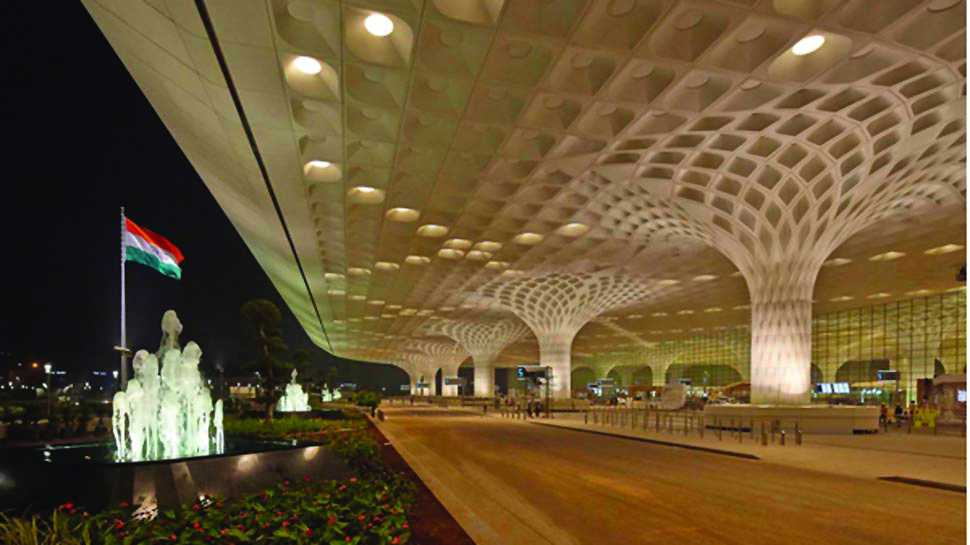

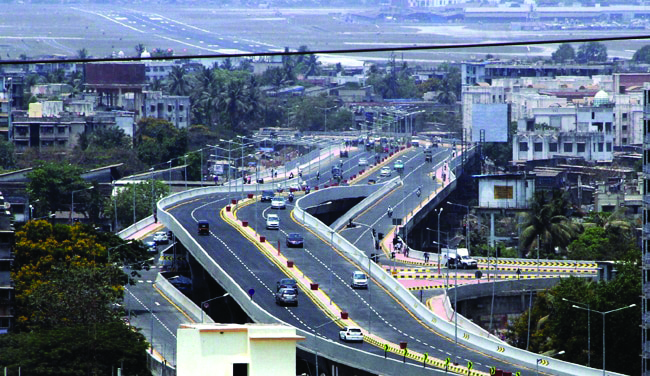
In our report, we had also listed some of the key projects, which were under development/construction stage at that time, and were expected to see progress over the next few years. We are happy to boast that all but one of those projects are under construction right now – that their pace of execution could have been faster is something that Mumbaikars always have to live with. Key projects that were highlighted then: – Sion Panvel Link Road: The 25-km-long eight-lane road was commissioned in xxx. The part of the project that involved building a new bridge over Vashi creek was cancelled, and the developers (Essel Infraprojects) was allowed to commission the project and collect toll on the highway part of the project. Later, the project got into litigation over toll reimbursement, after the state government banned tolling of private vehicles on state highways – eventually leading to Essel Infra terminating the contract and pursuing with litigation. – Mumbai Metro Line 3: The 34km long fully-undergound metro line was at conceptual stage in 2014 – and often drew flak from experts for being an “impossible” project in a city like Mumbai. However, in 201xx, MMRDA awarded seven packages of this ‘dream line’ to various developers, and work is being executed at rapid pace. – Navi Mumbai airport: Perhaps one of the most delayed project – Phase 1 of the airport was awarded to the GVK consortium in October 2017 – after being delayed for over 5 years. The developer is yet to award the EPC contract. Commencement of work is expected by December 2019. – Mumbai Trans Harbor Link: After multiple attempts to award this project on PPP basis, MMRDA finally awarded the 22km long, Sewri-Nhava Seva MTHL, on EPC basis to L&T and Tata Projects in November 2017 – after having procured funding from JICA. The project is expected to be completed by xx. – Coastal Road and Bandra Versova Sealink: The two projects (with the latter being part of the former) were awarded at different times in 2018. The projects, along with the already operational Bandra-Worli sealink, plan to connect the western suburbs, with the island city, through a network of six-lane roads, service roads and sea-links. – Churchgate-Virar Elevated Rail corridor: The project, envisaged to decongest the western railway line, has been put on the back-burner, and stands little chance of being revived. But for the last one, all the above projects are at various stages of construction activity, and should help transform the infrastructure landscape of the city significantly.
What no one can dispute is that the city has seen heightened level of award and execution activity, over the last five years. That the projects now being awarded should have been completed years ago, is an altogether different matter. But the lethargy and inactivity of the UPA government for over 15 years (just four projects of significance completed during 1999-2014) finally gave way to five years of nimble-footedness and action. Scores of road/metro/flyover projects have been conceptualized, awarded, and completed over the last five years. Together, major projects have ~Rs xxtn riding on them. When all of them are completed (hopefully by 2023) – the infrastructure of the city will look completely different from today.

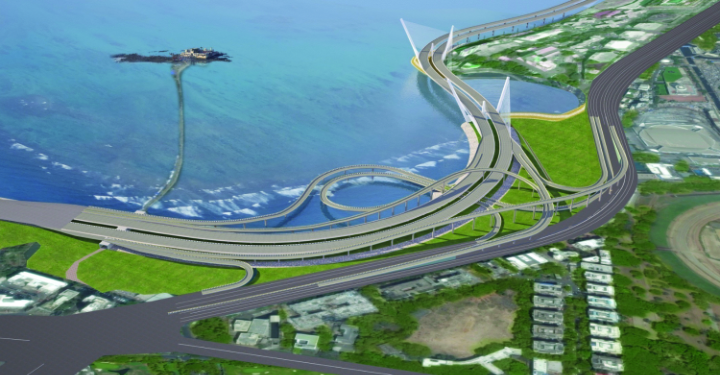
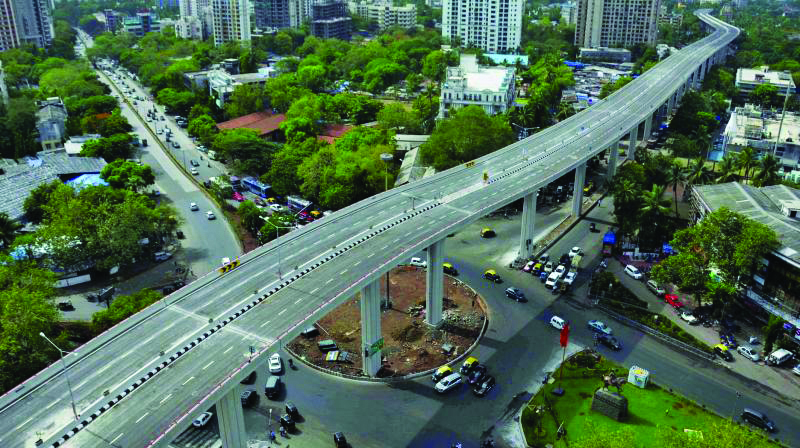
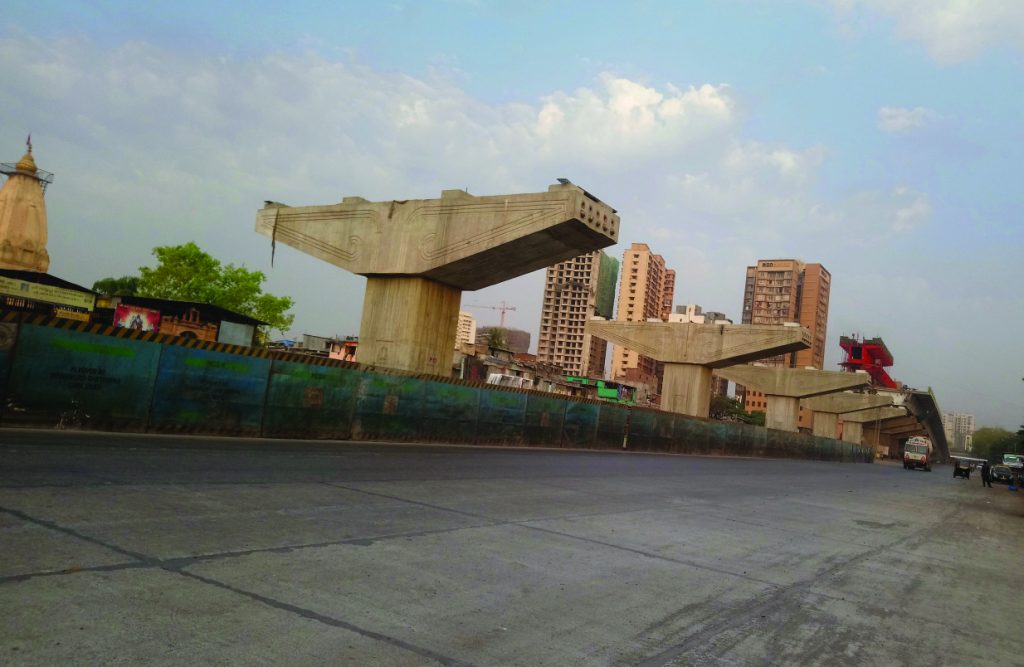

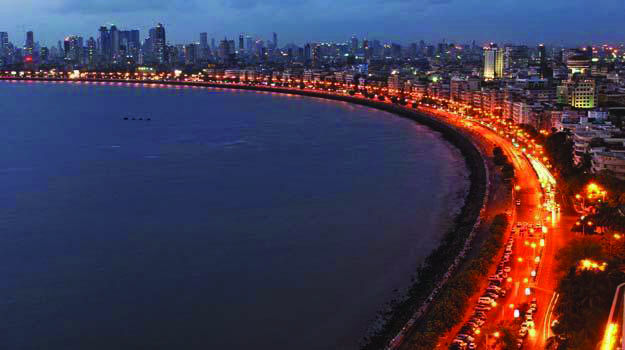
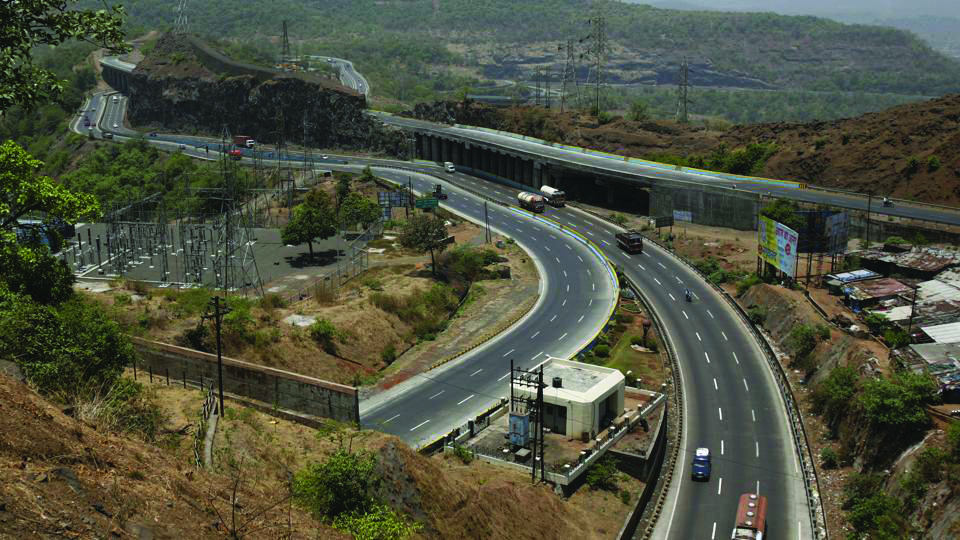
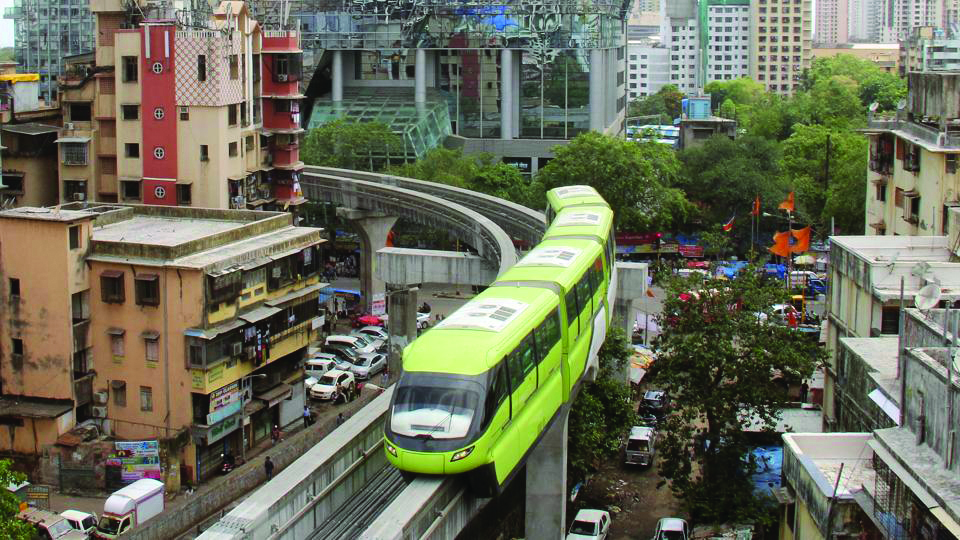
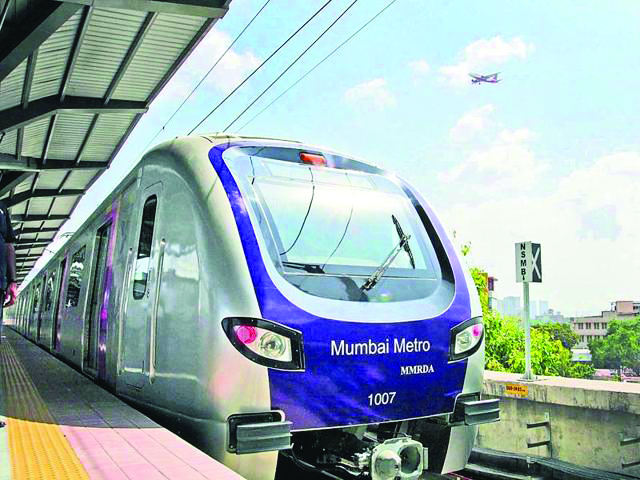
While Mumbai should have been one of the first cities in the country to start a metro service (given the paucity of land for building roads), it has been a laggard amongst all Indian metros. Not just Delhi, even Bengaluru started its metro service in October 2013 (before Mumbai). Not just the city, the entire state of Maharashtra has borne the brunt of the state government’s apathy – with literally no infrastructure project of significance commissioned over 1999-2014. However, over the last five years, the government bodies (especially the state government and MMRDA) have sprung into action and have awarded an unprecedented number of metro projects in the city.
The MMRDA metro master plan has undergone so many changes in the past three years that it becomes difficult to believe any new route being proposed till its plan and funding are approved and accepted. The current Mumbai Metro masterplan envisages a mammoth network of 265km of metro projects to be built at an investment of Rs 1.1tn. Of this, only 32km is currently operational (Line 1 and Monorail). The significant achievement of the current government is that almost 160km has been awarded over the last five years – with Rs 762bn riding on it. Never in the history of any city across the world has metro network expansion witnessed an expansion of this scale, in one go. That this massive infrastructure push has created havoc on roads, with almost every major road/corner dug-up, is another matter!


This massive expansion of metro network is sure to change the transport landscape in the city. From an operational length of just 32km, the Mumbai metro network is expected to touch 200km by 2023 – making it the second largest metro network in the country (after New Delhi at 350km) and the 10 th largest in the world (overtaking Singapore at 170km). The travel time for residents, congestion on the roads, and traffic in the local trains are all expected to be impacted positively by this expansion.
To provide a perspective, while the metro network in the entire country is expected to grow from xxkm to xxkm over the next 4 years (growth of xx%) – the Mumbai metro network will grow from xxkm to xxkm over the same period (growth of xx%). From accounting for just xx% of the total operational metro network in the country in 2019, Mumbai’s share will jump to xx% in 2023. The expected ridership on the metro network in 2023 is expected to be over 3mn passengers (daily) – amongst the top-10 in the world (estimates of other cities unavailable, assumption based on current figures).
Line 1 ( Versova-Andheri-Ghatkopar) and Monorail (Chembur-Wadala-Mahalaxmi)
The long wait for Mumbai’s entry into the ‘Metro club’ finally ended in May 2014, when the first phase of Mumbai Metro, built by a Reliance Infrastructure led consortium on a PPP basis, was thrown open to public. The service has since, significantly decongested the suburb of Andheri and provided much needed connectivity between western suburb of Versova to the eastern suburb of Ghatkopar – reducing travel time between the two ends from 90 minutes to 21 minutes.
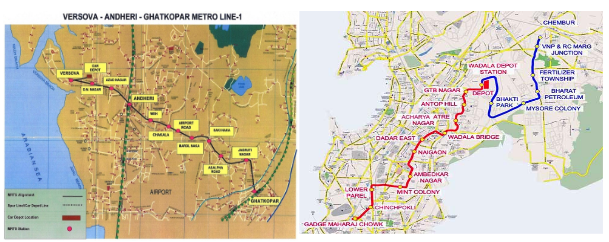
In December 2013, Phase 1 (Chembur-Wadala) of the Mumbai monorail was thrown open to the public. Constructed by L&T, the monorail was designed to eventually connect the suburbs to Mahalaxmi (the beginning of South Mumbai) in the second phase. Post commencement of Phase 1, the project faced multiple hurdles – in the form of accidents on the operational part and delay in Phase 2. Eventually, Phase 2 was commissioned in March 2019 – making the entire 20km line operational. Now the line connects the suburbs of Chembur to Mahalxmi – and will form a critical part of the city’s metro network, once Line 4 (Wadala-Ghatkopar-Thane) become operational.
While monorail has been derided as ‘joyride’ by lot of people and media publications, GV believes most people are missing the objective of this line. The line traverses through the narrowest and densely populated lanes of the city (Sewri, Parel, Mahalaxmi) and the thin structure of the monorail allows it to bend on sharp turns, which a metro rail would have not been able to do. GV believes that the MMRDA has been pragmatic in this case, and adhered to horses for courses ideology – enhancing the connectivity of those areas of the city that might have otherwise been deprived of the metro connectivity.
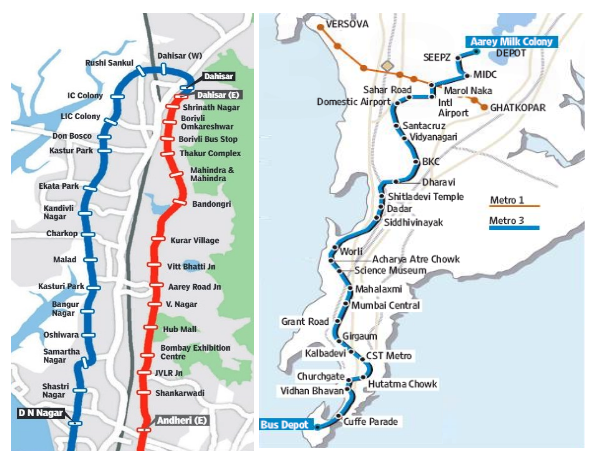
Line 2 – Dahisar-Charkop-Bandra-Mankhurd
Like most projects in the city, Metro line-2 also has a long and interesting history. It was first awarded on a PPP basis to Reliance Infrastructure (the same developer who built the line 1) in 2009. But funding and guarantee issues led to the termination of that contract in 2014. Thereafter, multiple attempts were made to revive the project in different formats (PPP/EPC), but without any success. Finally, the government decided to break the line into two parts – 2A from Dahisar to Andheri, and 2B from Andheri to Mankhurd.
Line 2A was inaugurated by the PM, Marendra Modi, in Oct-2015, along with a line parallel to it – line 7. Line 2A and 7 will together cost Rs 126bn, for which 40% funding is being secured from JICA. Winners of the two EPC packages for line 2A (both were won by JKumar) were announced on xx. Civil work on this line is in full swing, and expected to be completed by xx. The government hopes to make the line operational by xx.
Line 2B was divided into four packages, and winners were announced in August 2017. However, most bids were more than 25% higher than MMRDA estimates. Hence the packages were revised (four packages reorganized into three) and the winners were announced in xx. Civil work on this line has started around six months ago, and is expected to be completed by xx. The government hopes to make this line operational by xx.
Overall, line 2 – 42km; Rs 174bn – is expected to provide cross-city connectivity from western suburbs to Navi Mumbai, through the CBD of BKC. Combined with line 3 and line 4, it links almost every part of the city with BKC, and the island city.
Line 3 – Colaba-Bandra-SEEPZ
Line 3, when first envisaged, was the butt of jokes for the residents of the city. A 34km long fully underground metro line will take a decade to complete (if it ever starts) – in a city where a 10km overhead metro took 5 years to complete! But call it the will or the vision of the government bodies (state government, MMRDA, DMRC) – civil contracts for the line were announced in October 2015, and the revised contracts were formally signed in December 2016. The 34km completely underground metro project is expected to cost c.Rs 300bn – with almost 40% of the funding coming from JICA.
While two packages of the MM3 in Mumbai faced a few litigations initially, which delayed work by about 6 months, other projects have seen smooth and steady execution YTD FY19. All packages are making good progress, and the line is expected to be thrown open to the public by 2023.
Progress on Mumbai Metro Line 3 and Line 7A

Mumbai Metro Line 3 update: Site-wise progress

Line 4 – Wadala-Ghatkopar-Thane-Kasarvadavali
Just like line 2 provides longitudinal metro connectivity to the western suburbs of the city, line 4 seeks to do the same for the eastern suburbs. The line will connect Wadala and Ghatkopar to the far-flung eastern suburbs of Thane and Kasarvadavali. The line will have interchange with Monorail (at Wadala), Line 1 at Ghatkopar, Line 2 at Mankhurd, and Line 6 at Eastern Express highway. Civil works for Line 4 were awarded in August 2017. However, like line 2B, most bids were more than 25% higher than MMRDA’s estimates. So the packages were revised, and the winners were announced in xx. Civil works on this line have started around six months ago, and are expected to be completed by xx. The government hopes to make the line operational by xx.
While one looks at the infrastructure of a city in terms of intra-city connectivity, it is also as important to look at how well a city is connected to its neighbouring important cities through various modes of transport.
But with the burgeoning population and increasing economic activity in the city, constant upgradation of the existing infrastructure is needed. Here we find that the ‘best laid plans’ designed by the authorities remain for too long just that – plans. Some of them are finally seeing some action, and should help enhance the city’s connectivity to the world.
Subscribe to enjoy uninterrupted access